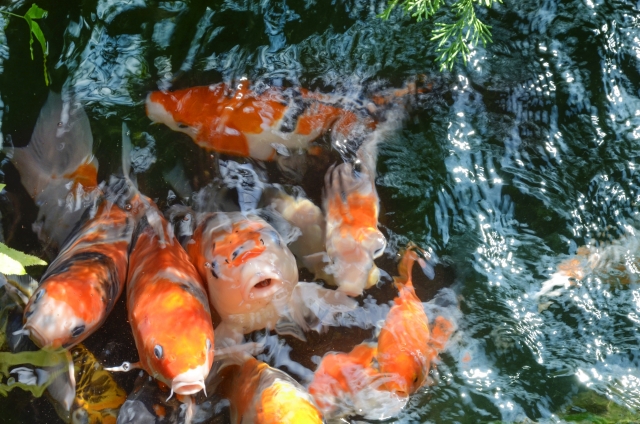Hi there. Today I want to write about Harajyuku, Takeshita Street in Tokyo. Harajuku, Takeshita Street is one of the base stations of Japanese pop culture. Younger generation, especially from elementary school students to college students love this place and they are fond of flocking here. This place is very pop and filled with so much youthful energy. I just remembered that when I was 18, freshman of an university, I cut a class and dated with a guy who was from the same hometown as me.
皆さん、こんにちは。今日は原宿街歩きをご紹介します。原宿、竹下通りと言えば若者カルチャー、特に小学生、中学生、高校生、大学生、ととても年若い子達が憧れ集う元気な街の代表です。18の頃に大学の授業をサボって竹下通りで同郷の男の子とデートしたことを、ふと思い出しました。

When you come to Takeshita Street, it’s absolutely a must to eat a crape. There are various kinds of crapes in a crape shop in Harajuku, and it is such a lovely moment to wonder what to order in front of the shop.
竹下通りに来たのなら、クレープは必ず食べること。原宿のクレープ屋さんにはありとあらゆる種類のクレープが並び、お店の前で何を頼むか迷う時間も幸せなひと時です。
Look at the first pic. Don’t get surprised. Those are food samples displayed in front of a crape shop. They are all inedible but it looks so real. Food sample was invented in Japan about 100 years ago, it is made of plastics and never get bad. Japanese came up with an idea to make these samplings and showcase them at a restaurant and the technics of making them developed remarkably in the last 100 years. They are all hand-made, I must mention. If you actually see these samples, you can easily imagine what they are and it stimulates your appetite and makes you eager to purchase. This food sample culture is one of our Cool Japan icons for sure.
最初の写真は、お店の前に置かれている食品サンプル。本物と見紛うほどの出来栄えです。食品サンプルとは、百年ほど前の大正時代に日本で考案された、合成樹脂やプラスチックで作る、実際のメニューそっくりの腐らないサンプルのことです。このサンプルを見てメニューを頼むというシステムを日本人は思いつき、およそ百年に渡りその技術は驚くほど向上して来ました。文字情報だけでなく、視覚に訴えると食欲が刺激され購買欲が進みます。この食品サンプル文化だって、立派なクールジャパンと言えるでしょう。
I got my crape! Looks yummy, doesn’t it? If you eat a crape for your lunch, it’s a good idea to order one that has canned tuna and salad and cheese in it. And if you feel like eating something sweet, you can have one with ice-cream, or cheese cake, or chocolate cake, or strawberries, or banana, or fruit sauce with whipped cream. There are 30-60 different kinds of crapes at each shop.
お買い上げしました。美味しそうでしょう?クレープをお昼ご飯の替わりにするのならば、ツナやサラダやチーズが入ったものにすると十分ランチになるし、甘いものが食べたければ、アイスクリームや、チーズケーキや、チョコケーキや、イチゴや、バナナや、フルーツソースが入ったものにホイップクリームを付けるのも良いでしょう。一つのお店には30~60種類くらいのクレープのメニューが用意されています。

In German, “Kitsch” means “fake”. I think the charm of Harajyuku, Takeshita Street is something “Kitsch=fake”. Containing much artificial sweetener and artificial coloring, they make things colorful as well as adorable. Teenagers might be attracted to those charms inevitably. And I came across the very image of “Kitsch=fake”-ness on the street.
ドイツ語で「キッチュ」と言えば「まがい物」という意味ですが、原宿竹下通りの魅力はまさにその「キッチュ」的なところにあると思います。人工甘味料をふんだんに使用して、彩り豊かにカラフルに愛らしく。そういうものに憧れるのが十代の感性なのではないか。そして、まさにそのイメージを体現していたお店がありました。
I remembered my childhood and early teenage days that I loved these color-tones and atmosphere more than anything. It evokes my nostalgia. Clothing and accessories that are sold at boutiques of Harajyuku are hip, edgy or excessively cute. To put them on is a privilege of your youth. Many people would feel exactly the same as me that you come across yourself in your youth who was full of energy and so bouncy. And if you are not young any more, I do recommend to visit here to encounter yourself of decades ago.
この様な色調や存在が大好きだった頃の自分を思い出し、少し懐かしい感慨に耽ったりするのも乙と言うもの。原宿のブティックに並んでいる洋服やアクセサリーも、若さの特権を謳歌する主張の強い個性的なものばかりです。若くてピチピチで、飛び跳ねるほどに元気がよかった頃の自分。そんな自分にふと巡り会えた様な、そんな気にすらなった原宿の竹下通り。もう若くはなくなってしまった人達にも、是非訪れてみて欲しい街並みです。
That’s all for today. Blessings to each one of you. Cheers to your young days!
それでは今日はここまで。皆さんに多くの祝福があります様に。若さに乾杯!






















